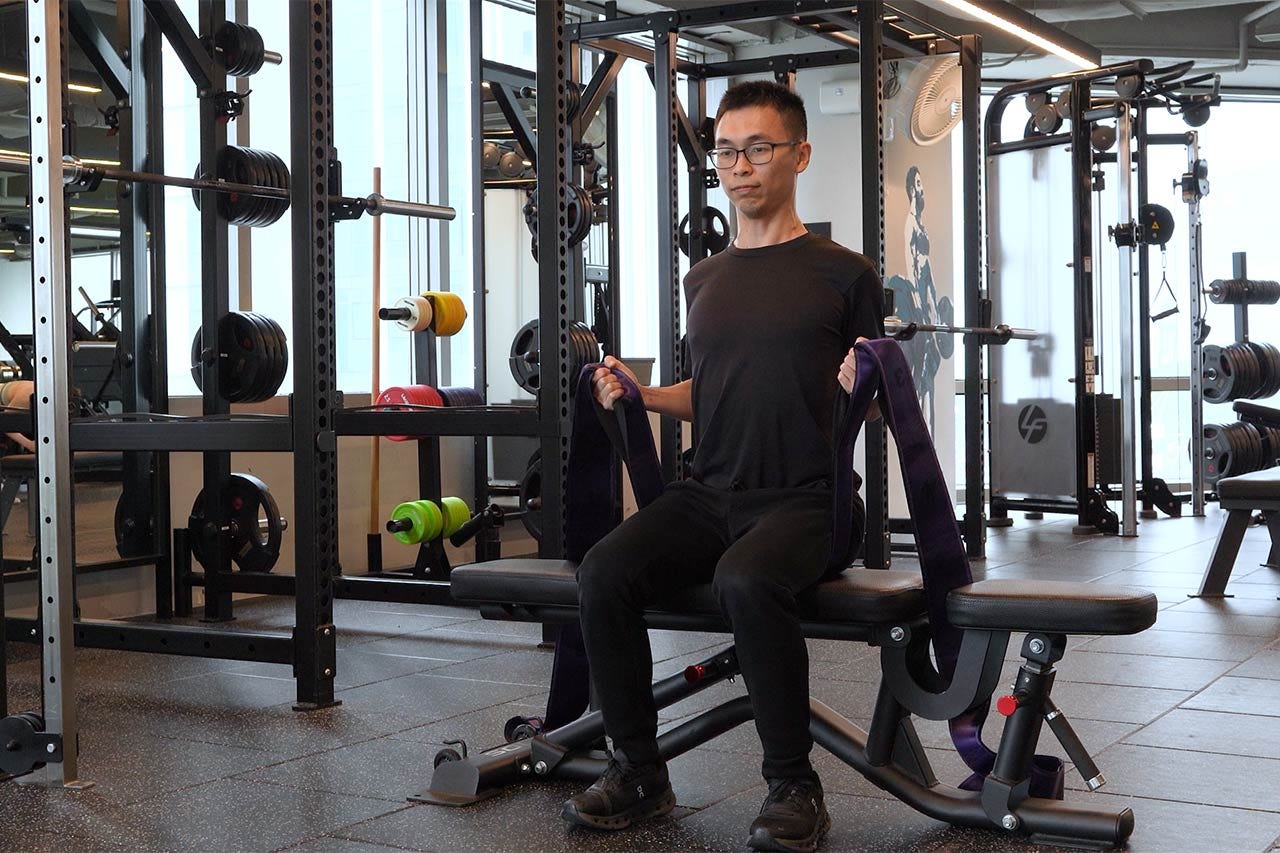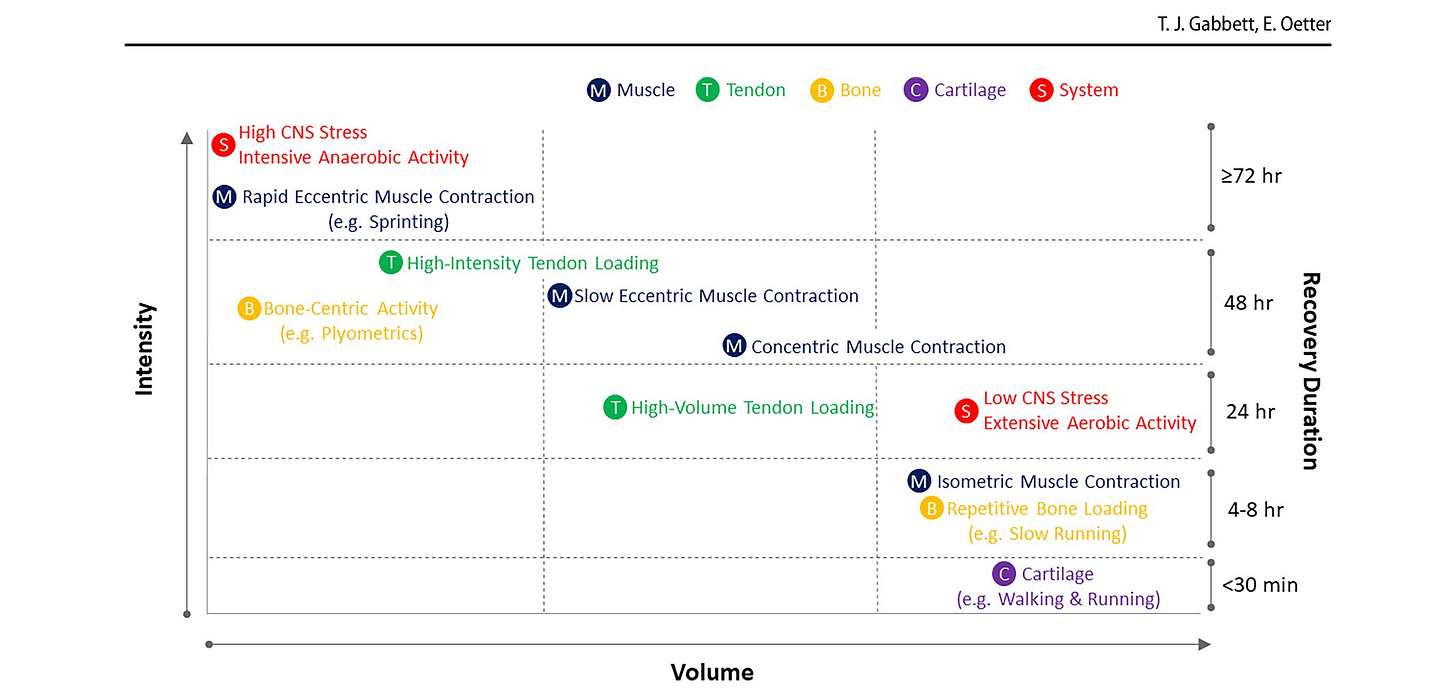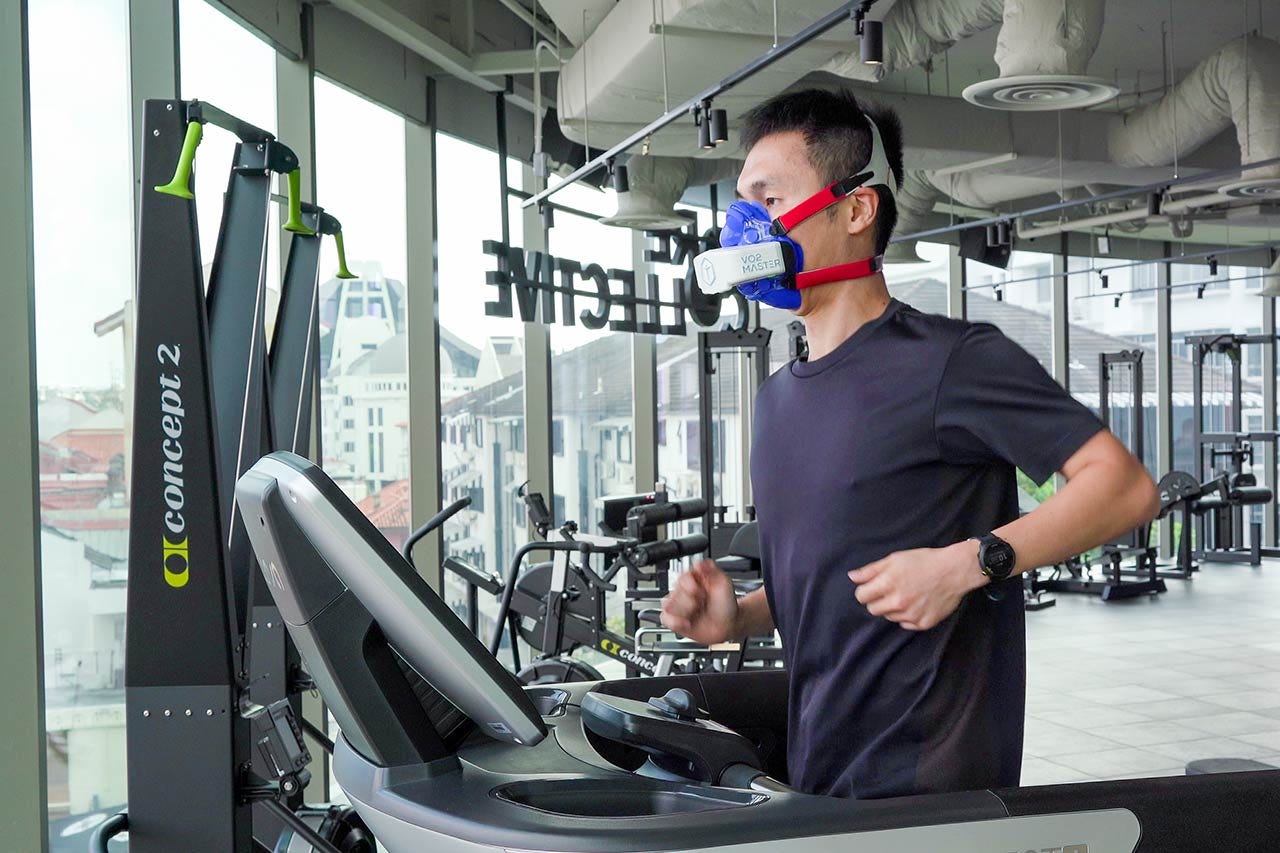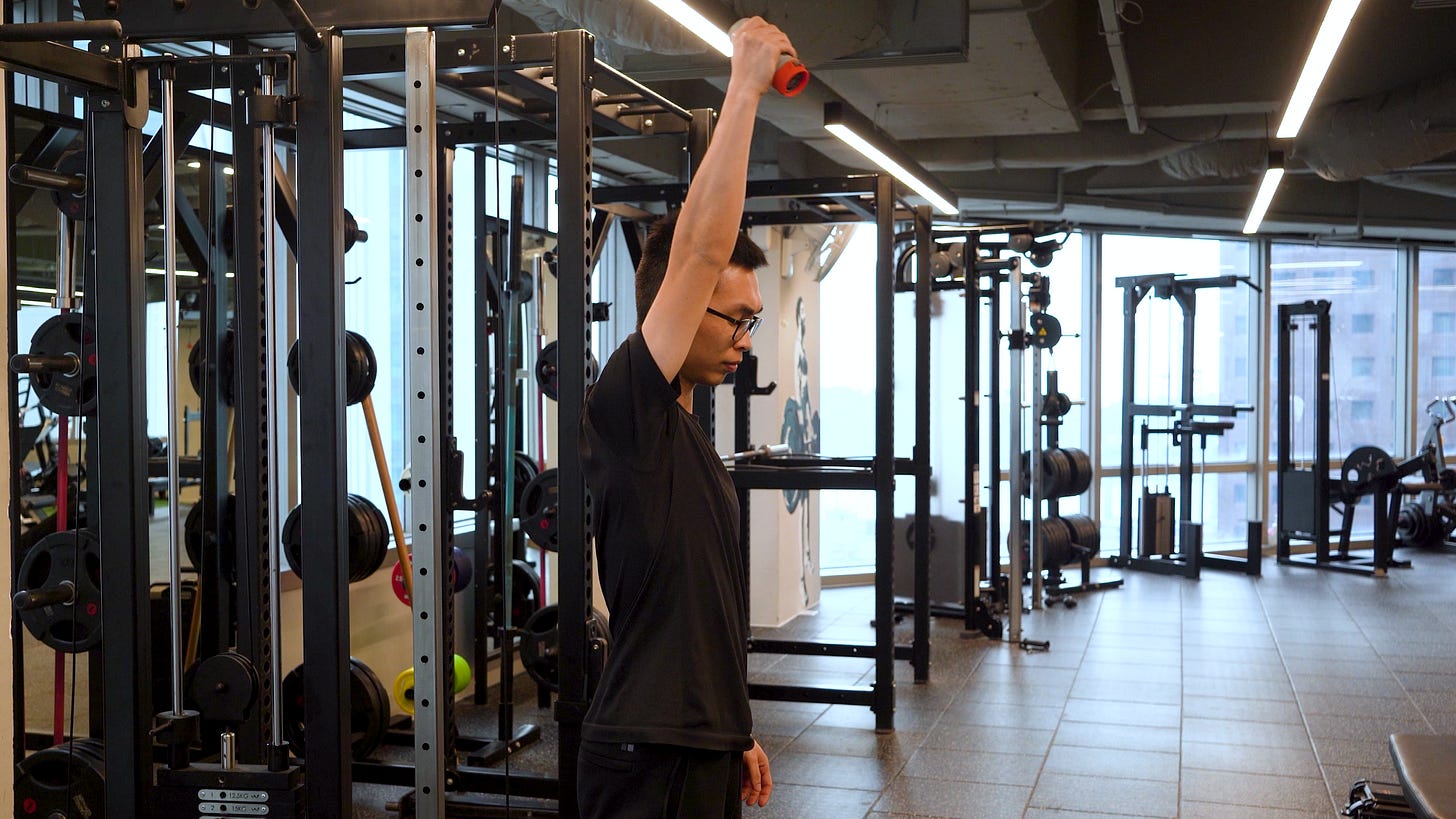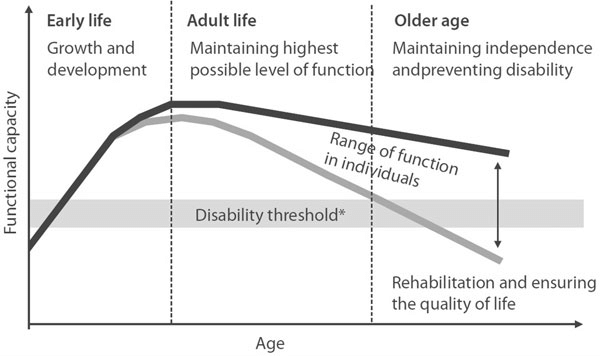How I Fixed My Health in 38 Minutes Per Week - Jing Zhi Chua
Workout data, health results, and the importance of time-efficiency as you age.
My 2024 Health Resolution… Worked?
In January 2024, I told a friend, Viktor Kyosev, that my health resolution was to do a bit of workout every day.
E.g. a one-minute stretch if I couldn’t do a full workout.
The plan failed.
But I also learnt the power of this quote:
In hindsight, I realised I’ve been preaching and practising a three-step system:
Physical performance testing
Time-optimised training
Retest and re-optimisation
For example, one of my subsequent optimisations was to start a Healthy CEO Club where members performed the above steps asynchronously.
It helped, and this system made me healthier in 2024 despite my failed health resolution.
I improved blood pressure, strength, cardiorespiratory fitness, etc.
While averaging 38 minutes per week working out.
I elaborate in the following video/show notes.
Show Notes
Here’s how the show notes are arranged:
Why I did strength testing first
Why I did VO2 Max testing next
My workouts, results, and data
1. Strength Testing and Why I Did It First
There are three main reasons:
Firstly, it helps me understand which exercises to prioritise, and which exercises are okay for me to cut out.
Basically, I looked for the 20% of exercises that gives me 80% of what I need for my goals.
I do this by testing the strength of various parts of my body and then identifying the main areas I should focus on.
Skip to my results below if you would like to see an example of what I am talking about.
The second reason for strength testing is that it enables a whole new way to train which cuts down my training time by more than 90%.
These test, which are similar to the ones done by EPL, NBA, NFL players, etc. for their pre-season fitness testing, and for their rehab, are basically:
pushing or pulling against objects that don’t move
bodyweight exercises
They are safe, easy and quick to execute.
These factors are helpful if you’re coming up with a time-efficient protocol.
But the best part is that these movements can be used for training as well.

You can do them on a day-to-day basis, you don’t need gym equipment, and you don’t need these testing tools; you only need them when you do the tests to check for progress every three to six months.
So, what you need is:
A band to execute maximum strength workouts
Some steps or a flat surface to do hop/jump exercises
For the band, you can use a yoga band, or you can use a patented one built specifically for such workouts, like the one I’m demonstrating with.
Here’s a page where I share the products I use, their information, and if I have, a partner’s discount.
Details of the band are in there.
If you would like to find out more on this sort of training, there is a podcast I shot earlier this year with the head of strength and conditioning of Singapore Sports Institute, Danny Lum, PhD.
He shared about his close to a decade of research on the topic.
For transcript of the above video, look here.
Side note: Danny and I are also organising half-day workshops on isometrics, please express interest here if you would like to find out more.
Coming back to the time-efficiency part of such workouts, because I can just use a band for maximum strength workouts, I save on travel time, workout preparation time, cool down time, etc.
More crucially, I can sneak in exercises as short as four seconds per day and still get strength gains.
That’s what I found in January last year, and also in line with Danny’s research (the one he mentioned at this part of the video.)
To top things off, there’s also been a recent study that showed we recover quicker from isometric workouts, which means you can achieve more gains in shorter training blocks.
The last reason to do strength testing first is because it’s fundamental to other activities and sports that you might incorporate into your lifestyle.
In other words, you require strength and fitness for you to stay injury-free, whether you’re an active person or not.
And if you are female, strength is even more crucial to you as researchers found that it seems to have more influence on mortality in women than in men.
Again, more related content on these topics to come.
On the whole, it makes most sense for me to do strength testing first because it eases me into the workout protocol.
One thing’s for sure.
It is more beginner-friendly than the next step, VO2 Max testing.
2. Why I Did VO2 Max Testing Next
I did VO2 Max tests next because, in my opinion, and according to many scientists, this is the strongest predictor of long-term health.
I published a deep-dive video with elaborations.
Show notes to the video can be found here.
Quick Introduction to VO2 Max
In simple terms, VO2 Max simply means the maximum amount of oxygen your body can utilise.
To do the test, you have to do an endurance activity up to exhaustion.
This can be running, cycling, swimming, etc.
The better you’re able to utilise oxygen during these activities, the better your VO2 Max results.
Applying VO2 Max Knowledge to My Training
I decided to do running out of all the sports possible to test and train my VO2 Max.
I had three main reasons:
Firstly, I believe running helps you improve your VO2 Max gains in the shortest amount of time.
To quote tangential research, running also promotes bone health and is considered a weight-bearing activity, whereas other sports like cycling for example, does not have similar osteogenic effects.
Since my overall goal is time-efficient health optimisation, I ultimately chose running as my main training modality.
Secondly, VO2 Max and the heart rate training zones derived in the results are sport specific.
Hence, it’s logical that I trained and tested myself in the same sport.
Lastly, I was also training for my annual military test, and it coincidentally includes a run segment.
It therefore made even more sense for me to pick running as the main way to improve my VO2 Max.
3. My 2024 Workouts and Health Results
Here’s a snapshot of my 2024 workouts and health results:
Strength Component
In January, I experimented with my strength training, doing an isometric mid-thigh pull on the strength testing equipment for 22 consecutive days.
My strength increased from around the 50th percentile to above the 80th percentile.
My personal best result, however, seems like an anomaly, because for the rest of the year, I’ve been around the 75th percentile range in terms of maximum strength per body weight, although overall, there is still a net gain.
In March to May, I did other types of strength testing, so not just the isometric mid-thigh pull.
In this link is my result overview file from VALD, the equipment I am using for these tests.
Do note that this is just an overview.
I.e. The VALD platform ‘dashboard’ view for results.
I also picked a few reports for individual tests so that you get an idea of how they look like.
If you would like to see the full result, e.g. for each exercise, view of the progress over the year, etc. please feel free to reach out.
There are too many strength report variations to justify exporting everything for now.
But I’m happy to help if I understand what you specifically need.
That aside, you can already see that there are many things I need to work on, like my grip strength and upper body maximum strength.
These results were, however, not a priority because I started running again after about a decade of hiatus, so there was a need for me to do some conditioning for running.
Especially since I started feeling some niggles which I was afraid might escalate to an injury.
One of the things I did was Alex Natera, PhD’s strength tests for running fast.
I cover my progress for these run-specific test in the above video.
In gist, I found out that I need to improve the strength of my left calf and left quadriceps.
Hence, I worked only on those areas instead of doing whole-body strength workouts or typical strength training routine for runners.
The result is that:
The clear direction relieved my injury-related anxiety
The exercise prioritisation saved me training time
My niggles went away
I just want to add that this block of strength training, between March and May, where I spent around 30 minutes each week doing maximum strength isometrics, also helped me with my blood pressure issues.
You can find my blood pressure file through this link.
My improvement is in line with what I learnt later in the year, that isometrics exercise brought bigger blood pressure benefits than aerobic exercise, resistance training, and interval training.
In essence, here’s what the research found.
Hence, continuing isometrics made even more sense for me.
To round off the year strength-wise, in my next training block, from September to November, I was optimising for my annual military test.
During that period, all I did was either a minute of push up or a minute of sit up on the days I did strength training, which was either twice or thrice per week.
Again, I’ve shared my training protocol for the test in previous videos; here’s the link to the playlist.
VO2 Max Component
For the VO2 Max side of things, here are my results last year.
The worst result I got was 46.2 ml/kg/min in March.
My VO2 Max then went up to 50.9 in April, after I did about an hour and half running each week; the sessions were combinations of zone two runs and twice per month 10-to-15-minute all-out runs.
During my second training block, it went up to 52.7 in November, after I did about an hour running each week. The sessions were a combinations of zone two running, and 4-6 sets of 400m intervals; the intervals were meant to drive adaptions specific to my military fitness test.
These VO2 Max results correspond to improvements from the 70th to 88th to 92nd percentiles.
Here are my VO2 Max reports if you would like to take a look.
In the reports, you can also see the heart rates zones shown in the VO2 Max results to be in my ‘zone two’ range.
Training in this zone, to oversimplify things, is the most time-efficient way to train your VO2 max.
Again, I’ll expand on this further in future videos because there’s lots to cover in this topic.
My ‘Zone Two’ Experience
Across the year, one thing that happened was that my ‘zone two’ range became easier to run in.
If you have ever tried zone two running, you would know although it has tremendous benefit, it can be agonising to stay within the range because if you are unconditioned, your heart rate would easily go above the range when you start jogging.
That was the case for me at the start of the year, where my jog-walk workout essentially had plenty of walking. But in the second half of the year, it’s almost totally running.
And with the latest test, it was tempting to do more zone two work because the top of the heart rate range is at the highest point it has ever been for me, which means it would be less agonising for me to keep within zone two.
I just thought it’d be useful to point out these zone two observations because many people struggle with it, and I personally find it inspirational when I see people putting in the effort.
Health Screening Results
Before I round off with my health and performance outcomes in 2024, I want to add that I’ve only done one round of health screening last year.
This was last February, and I will be doing my next health screening this year.

I believe it is meaningful to share this because health screening should not be neglected even though such physical performance tests might provide more actionable insights, especially if you are, for example, a sporty young adult optimising for better health.
For those interested, I went with MITO Health, which provides:
fuss-free house-call health screening
a dashboard to manage health results
more longevity-related biomarkers than typical basic health screening
A discount to their service through can be found in the aforementioned list of partners my company trust.
A full review of their service to come; stay tuned.
Other than that, I have no health screening updates from that perspective, for now.
Summary
In 2024,
I hit my goal of getting an IPPT gold; that felt like the big milestone for me
I lowered my blood pressure to healthy levels, and I feel like I’m in more control of my health now
I increased my strength from around the 50th percentile to around the 75th percentile, which helped me with day-to-day activities like carrying my two-year-old and playing with her
I increased my VO2 max from 70th percentile to 92nd percentile meant that I went from the second quartile to the top quartile, which, from a mortality risk standpoint, is similar to as if I were smoking, and then I stopped smoking

Plans for 2025
I will be doing more of such physical performance tests this year, which should improve the protocol.
But given that I averaged 38 minutes of workout per week, and only around 3 minutes of that was at high intensity, i.e. above 80% effort, I think this is a good baseline 'system’ to start from.
The 38 minutes made my other 10000 minutes of the week better, which I guess in a way is a 264x ROI.
Lesson Learnt: Workout Time Efficiency is Critical as You Age
One of the lessons I learnt last year was that time-efficiency becomes increasingly critical as you age.
This might seem apparent in hindsight, but there are many levels to every game and my understanding of the lesson was elementary.
For instance, I have better appreciation that:
The age with the largest strength development, based on findings, was 12 years old for females and 14 years old for males, and at those ages, adolescents can gain the same strength in three weeks that a typical adult would take a year to build.
It becomes harder to achieve health gains later in life, i.e. you have to put in more effort to see the same, if not, lesser results.
And at later life stages, time-optimisation can evolve from a good to have to a must-have, because the rate of physical decline is accelerated, so even though you can be doing all that is possible, staying mobile might still be a challenge.
Etc.
My increased understanding shifted my perspective on ageing;
Working out today for a few minutes might give you comparable health gains to a few years’ worth of workout later in life.
Your days are not equal.
Same workout today ≠ same workout tomorrow.
I hope my sharing inspires you to optimise your exercise routine with health as the primary goal, staring today.
If you have any questions on the above content, let me know.
To learn more about my company’s services like personal training, all the tests I mentioned, physiotherapy, Healthy CEO Club etc., please feel free to reach out for a chat too.
If not, all the best for 2025!



